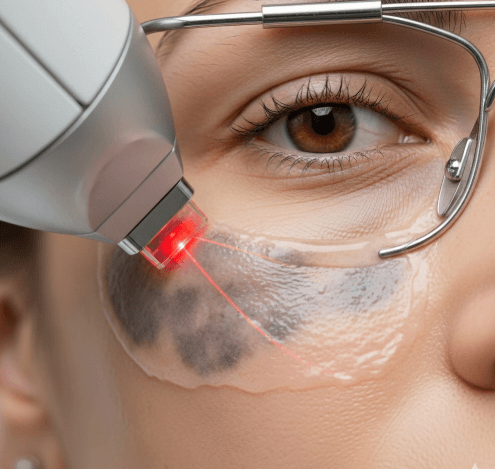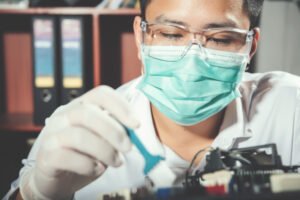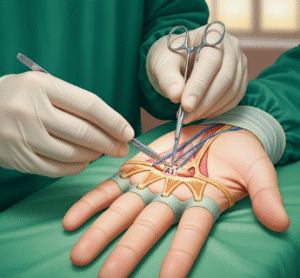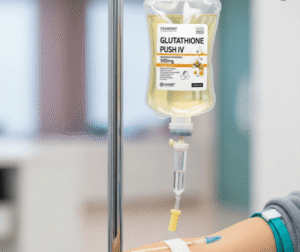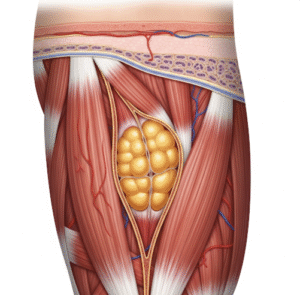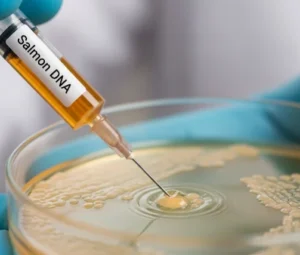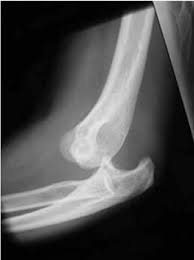Hori’s Nevus Laser Treatment in Korea is a highly advanced and specialized service offered by dermatology clinics for patients with bilateral acquired dermal melanocytosis, more commonly known as Hori’s nevus. This condition presents as bluish-gray or brownish patches on both cheeks, typically developing in adulthood. Unlike freckles or sun spots, Hori’s nevus is a deep dermal pigmentation disorder, making it more resistant to superficial treatments.
Korea, renowned for its expertise in treating complex pigmentation issues, provides safe, effective, and long-lasting solutions for Hori’s nevus using Q-switched Nd:YAG lasers, Pico lasers, and combination therapies. Korean dermatologists are particularly skilled at tailoring treatment protocols for Asian skin types, which are prone to post-inflammatory hyperpigmentation if treated too aggressively.
What It Is
Hori’s nevus is a form of dermal melanosis caused by melanocytes depositing pigment deeper in the dermis. Unlike Ota’s nevus, which often affects the eye area, Hori’s nevus is confined to the cheeks and sometimes the temples or forehead.
Key characteristics include:
- Bilateral gray-brown or blue-gray pigmentation.
- Appears in adulthood, most common in Asian women.
- Caused by genetic predisposition and triggered by sun exposure or hormones.
- Benign but often cosmetically distressing.
In Korea, laser treatment is the gold standard, as topical creams and chemical peels rarely penetrate deep enough to be effective.
Why It’s Done
Patients undergo Hori’s nevus treatment in Korea for several reasons:
- Cosmetic improvement → To clear the grayish pigmentation and achieve even-toned skin.
- Confidence boost → Many patients feel self-conscious about facial pigmentation.
- Cultural beauty ideals → Clear, spotless skin is highly valued in Korean culture.
- Preventive care → To stop the pigmentation from worsening over time.
Because Hori’s nevus does not fade on its own, professional treatment is often the only effective solution.
Alternatives
While laser therapy is the mainstay, Korean clinics may offer supportive alternatives:
- Q-switched Nd:YAG laser (1064 nm) → Standard for deep pigmentation.
- Pico lasers (PicoWay, PicoSure Pro) → Break pigment into finer particles for faster clearance.
- Alexandrite laser (755 nm) → Occasionally used but less common for deeper dermal pigmentation.
- Topical brightening creams → Hydroquinone, Vitamin C, niacinamide (limited effect).
- Chemical peels → Improve overall skin tone but insufficient alone for Hori’s nevus.
- Observation → In mild cases, some patients delay treatment until pigmentation deepens.
Preparation
Preparation for Hori’s nevus treatment in Korea is comprehensive:
- Consultation → Dermatologists perform a skin analysis using imaging devices to assess pigment depth.
- Pre-care instructions → Avoid sun exposure, tanning, retinoids, and strong exfoliants before treatment.
- Medical history → Patients disclose any history of pigmentation issues, keloid scars, or photosensitivity.
- Skin conditioning → Hydrating creams and sheet masks are encouraged to strengthen the skin barrier.
For laser treatments, numbing cream is usually applied to minimize discomfort.
How It’s Done
A Hori’s nevus laser session in Korea usually lasts 30–45 minutes:
- Cleansing – The skin is thoroughly cleansed of impurities and makeup.
- Numbing cream – Applied for 20–30 minutes.
- Laser application –
- Q-switched Nd:YAG (1064 nm) or Pico laser is used in multiple passes.
- The laser energy penetrates deep into the dermis to fragment melanin clusters.
- Sessions are typically performed at low fluence to minimize risks of rebound pigmentation.
- Post-care – Cooling masks, LED therapy, or Vitamin C infusion.
- Final step – Sunscreen and moisturizers before leaving.
Most patients require 5–10 sessions spaced 4–6 weeks apart to achieve significant fading.
Recovery
Recovery is mild but requires consistency:
- Immediately after → Mild redness and swelling that subside in hours to a day.
- 3–7 days later → Pigmentation may temporarily darken before lightening.
- 2–4 weeks later → Gradual fading of pigmentation becomes noticeable.
- Long-term → Continuous improvement with repeated sessions.
Korean clinics accelerate recovery with hydration therapies, calming ampoules, and post-care facials. Daily SPF 50+ sunscreen is crucial to prevent recurrence.
Complications
Hori’s nevus treatment is generally safe in Korea, but possible side effects include:
- Redness or swelling for a few days.
- Temporary darkening of spots (expected before fading).
- Rare hyperpigmentation or hypopigmentation if aftercare is ignored.
- Recurrence over time if sun protection is neglected.
Korean dermatologists minimize risks by using low-fluence, multi-session protocols instead of aggressive single treatments.
Treatment Options
Korea offers specialized Hori’s nevus treatment programs:
- Q-switched Nd:YAG programs → Standard treatment with multiple sessions.
- Pico laser packages → Faster pigment clearance with advanced technology.
- Brightening add-ons → Vitamin C infusion or whitening ampoules post-laser.
- Combination therapies → Laser treatment plus Aqua Peel or Hydrafacial for hydration.
- Multi-session deals → Clinics in Seoul, particularly Gangnam, provide affordable bundles for 5–10 treatments.
Conclusion
Hori’s Nevus Laser Treatment in Korea is one of the most advanced solutions for deep dermal pigmentation. With the use of Q-switched Nd:YAG and Pico lasers, Korean dermatology clinics achieve safe, gradual, and lasting results tailored to Asian skin types.
The country’s approach—emphasizing precision, prevention, and holistic aftercare—ensures that patients not only see cosmetic improvements but also enjoy long-term skin health. For those struggling with the grayish pigmentation of Hori’s nevus, Korean laser treatments provide one of the most reliable and effective options worldwide.

